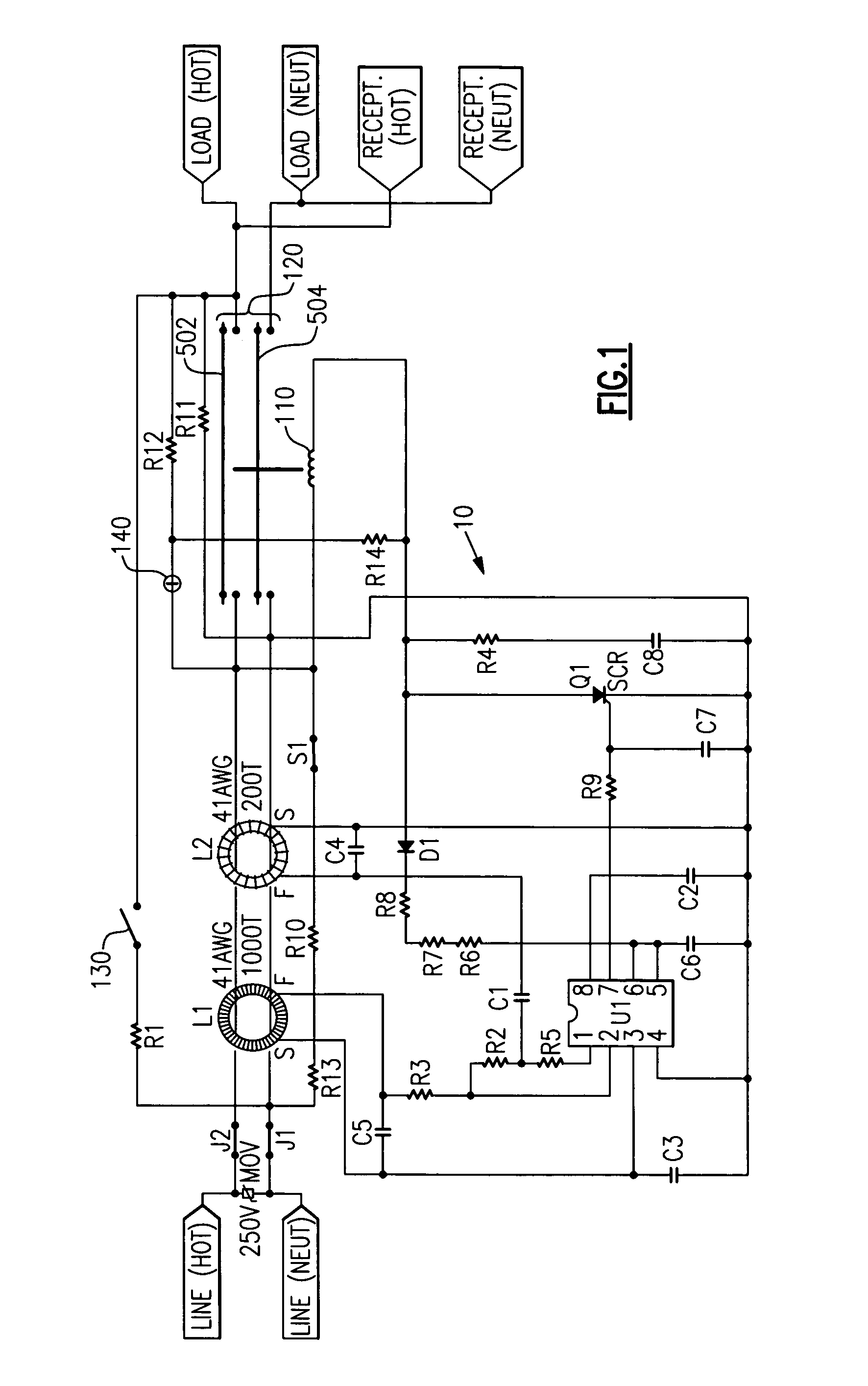GFCI with miswire lockout
a technology of miswire lockout and protection device, which is applied in the direction of earth fault current operation switch, emergency protective arrangement for limiting excess voltage/current, protective switch details, etc., can solve the problem of inability to prevent the problem of defective solenoid driving device inherently more difficult, device does not provide ground fault protection, etc. problem, to achieve the effect of eliminating hazardous conditions
- Summary
- Abstract
- Description
- Claims
- Application Information
AI Technical Summary
Benefits of technology
Problems solved by technology
Method used
Image
Examples
Embodiment Construction
[0036]Reference will now be made in detail to the present exemplary embodiments of the invention, examples of which are illustrated in the accompanying drawings. Wherever possible, the same reference numbers will be used throughout the drawings to refer to the same or like parts. An exemplary embodiment of the ground fault circuit interrupter (GFCI) of the present invention is shown in FIG. 1, and is designated generally throughout by reference numeral 10.
[0037]As embodied herein and depicted FIG. 1, a GFCI circuit in accordance with one embodiment is shown. When a differential transformer L1 senses unequal amounts of current flowing in the hot and neutral conductors due to a ground fault condition, device 10 causes a breaker coil 110 to activate, opening circuit interrupting mechanism 120. As shown, circuit interrupting mechanism 120 includes hot and neutral bus bars 502, 504. The circuit interrupting mechanism 120 is configured to establish and break connectivity between the hot a...
PUM
 Login to View More
Login to View More Abstract
Description
Claims
Application Information
 Login to View More
Login to View More - R&D
- Intellectual Property
- Life Sciences
- Materials
- Tech Scout
- Unparalleled Data Quality
- Higher Quality Content
- 60% Fewer Hallucinations
Browse by: Latest US Patents, China's latest patents, Technical Efficacy Thesaurus, Application Domain, Technology Topic, Popular Technical Reports.
© 2025 PatSnap. All rights reserved.Legal|Privacy policy|Modern Slavery Act Transparency Statement|Sitemap|About US| Contact US: help@patsnap.com



